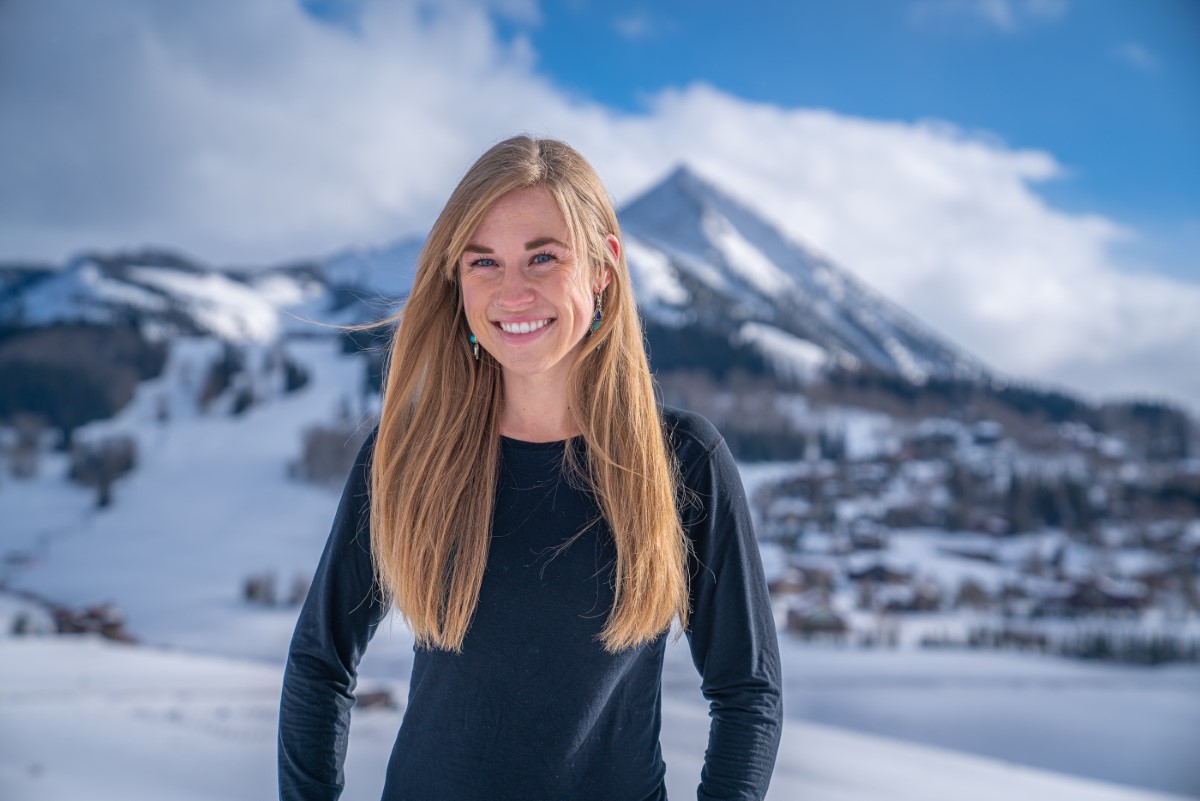Enjoy the outdoors, Pueblo’s historic downtown, and the greater area with this three-day itinerary.
Despite growing up in Southwest Colorado and five generations of family in Colorado Springs, I had yet to experience the city and region of Pueblo, only 45 miles south.
In mid-June, my partner Eric Phillips, a professional outdoor adventure and landscape photographer, and I took a three-day trip that opened my eyes to how lush and richly historic Pueblo is.
From the vibrant vegetation of the Wet Mountains and rolling foothills to the state and city parks, the Pueblo Chiles and Big Jims grown on eastern farms, and the Historic Arkansas Riverwalk of Pueblo, the area is full of preserved outdoor spaces, delicious local food, and a sense of welcoming hospitality.
Here’s a rundown of where we went, so that you can go, too.
Historic Arkansas Riverwalk of Pueblo
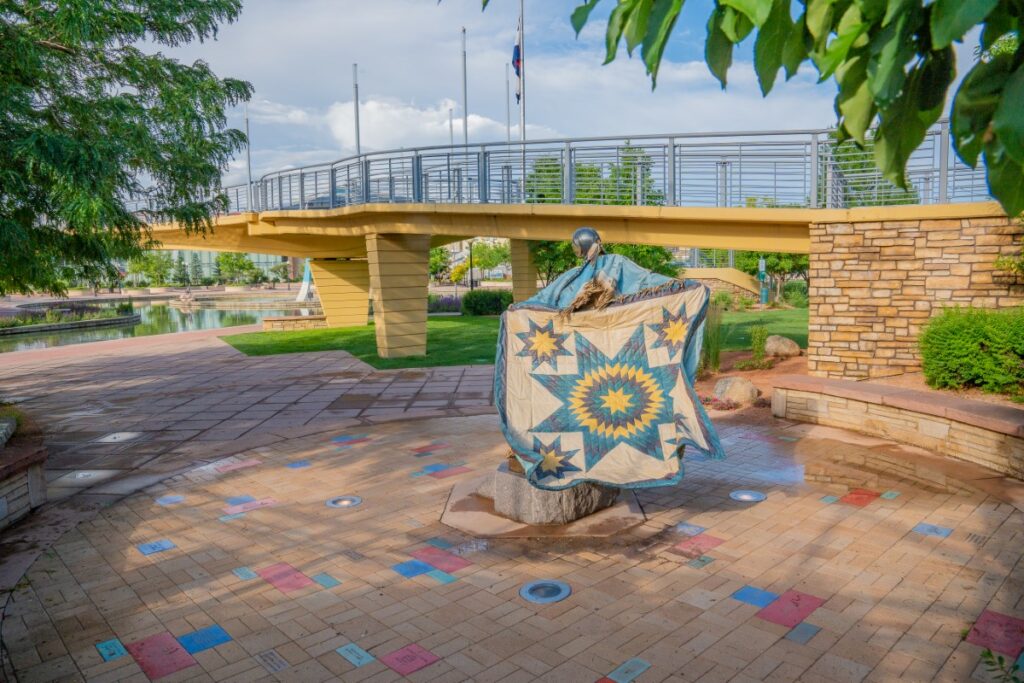
A calm canal threads downtown Pueblo, reminiscent of Venice, Italy, that restores the Arkansas River to the original early 1900s location prior to ‘The Great Pueblo Flood’ of 1921. The 32-acre reclamation includes educational sculptures, meticulous landscaping, and paved walking paths, all of which revitalized the community and local economy.
As an outdoor classroom, embedded tiles in the sidewalk show the region’s river geology and statues share the history of indigenous figures. Restaurants line the water. Folks can even hop on a 25-minute guided boat excursion with a history lesson, ride in a gondola, and venture by pedal boat or kayak.
We camped at Lake Pueblo State Park, which is only an 11-minute drive from downtown Pueblo. Before heading back to to the park camp, we grabbed dinner at Brues Alehouse on the waterfront, a restaurant experience we can’t recommend enough.
Brues Alehouse
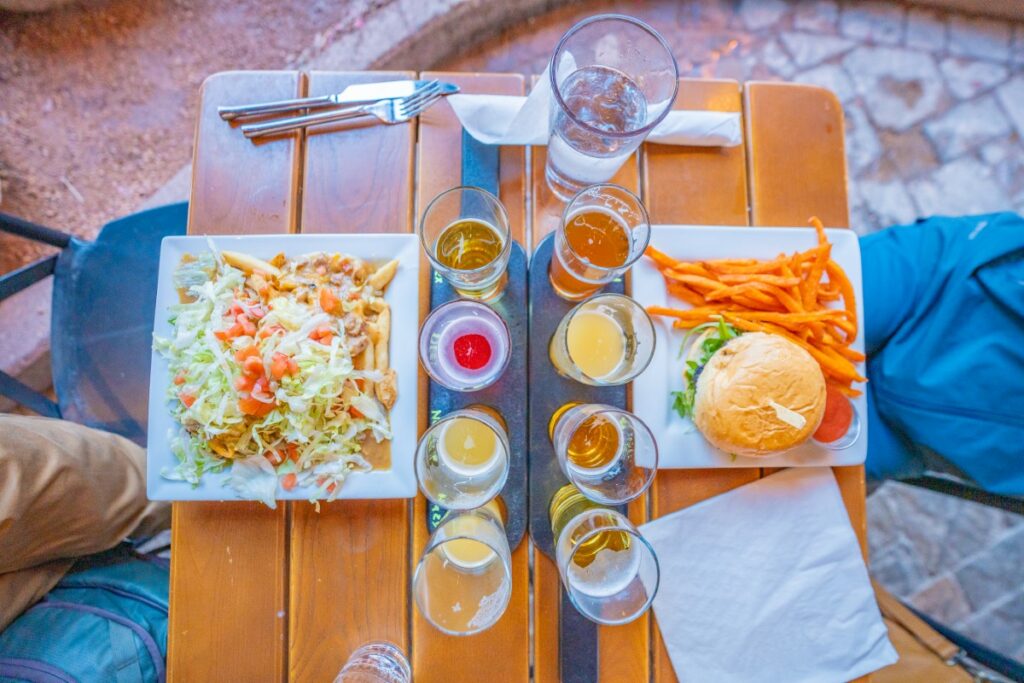
Downtown Pueblo is teeming with relics including several buildings that are listed in the National Register of Historic Places. Restaurants line the waterfront of the Historic Arkansas Riverwalk such as Brues Alehouse, which is located in the city’s old police station.
Founded in 2015, Brues Alehouse is a family-run business, owned by Tony Garcia, who earned a master brewing certification in Munich, Germany. The multifaceted operation includes a full-fledged brewery, restaurant, coffee bar, bakery, and live music venue.
The multiyear renovation and development included the removal of jail cells. The original police sign and a portion of the jail cell doors were reincorporated into the restaurant’s interior, which Kaci Cambo, Event Coordinator, showed us on a walk-through after our meal on the patio. The property also reused columns from the steel mill that date back to the 1800s.
And an old railroad track sits beneath the bar, on the ground where patrons’ feet hang off their stools, which was owned by Colorado Fuel and Iron (CF&I). Eric and I live in Crested Butte, Colorado, where CF&I owned mines and exported the coal to operate the steel mill plant on the south side of Pueblo. The steel mill, now owned by Evraz and called the Evraz Rocky Mountain Steel Mill, is the largest solar-powered steel production facility in the world, reports the Colorado Sun.
To dial in the flavor of their in-house brews, Brues Alehouse uses a reverse osmosis water purification system to purify the water that’s added to the beer, allowing them to add back in the appropriate minerals that alter the taste. If you enjoy beer, don’t miss out on a full flight to sample the brewery’s unique variety.
For food, we recommend going for the blistered shishito peppers with ranch, the classic slopper—an open-faced double patty smothered in green chili — and leave room for carrot cake.
Lake Pueblo State Park
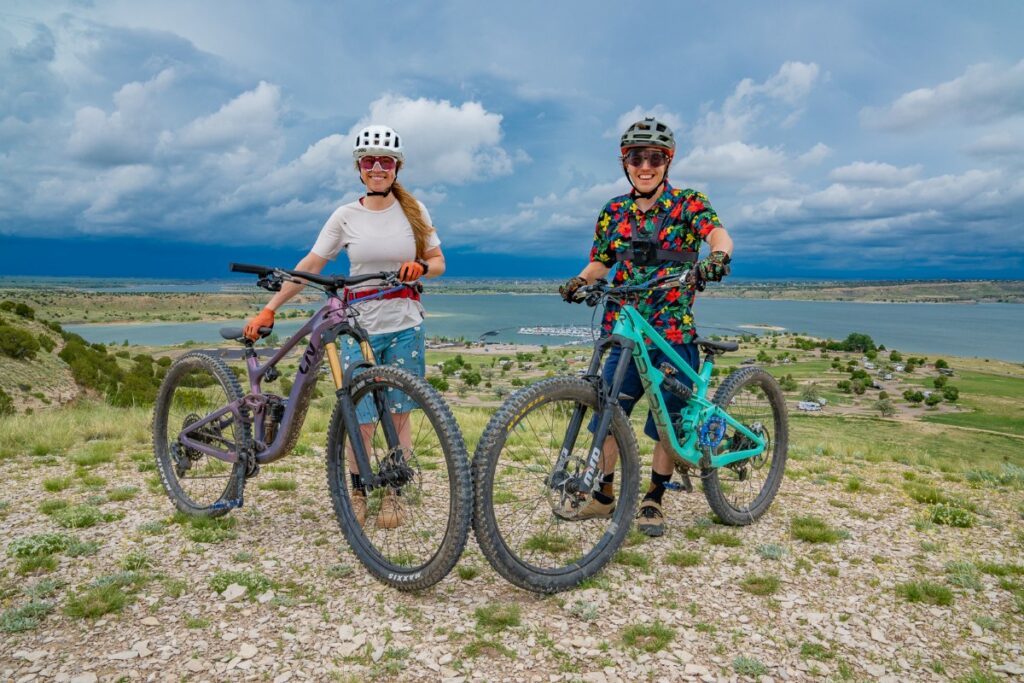
On day one, we mountain biked at Lake Pueblo State Park, which is decorated by 200-year-old Junipers, 60 miles of shoreline, and 10,000 acres of open land. With 393 reservable campsites, it was easy to book ahead. The 64 miles of trails has earned the location a colloquial name “Fruita of the Front Range” and kept us entertained.
Visitors can fish, stand up paddleboard (SUP), boat, hike, camp, mountain bike, beach lounge, picnic and more. If you enjoy water play, be sure to check the weather, wear a personal flotation device (PFD), and don’t underestimate the power of the wind here: We brought our SUPs then opted out due to the powerful gusts and lightning dancing on the horizon.
From our Arkansas Loop campsite, near the boat ramps on the southeast side of Pueblo Reservoir, we mountain biked straight to the trail system, which interweaves steep rocky bluffs, four-winged saltbush, and sagebrush. I couldn’t believe the brilliant, blossoming varieties of cacti throughout the short-grass prairie: Pinkflower hedgehog, Plains Prickly Pear, tree cholla. With blue-gray water as a backdrop, riding between thorny head-height trees felt like a whimsical scene from Dr. Seuss. We rolled past a small coachwhip and fire ants and timed our ride before the thunderstorm.
As the most visited Colorado state park, close to 3 million visitors play here per year, especially in the summer. High travel isn’t negative as long as everyone works together to caretake and plan ahead, said Park Ranger Joseph Portteus, who I interviewed before our trip.
“The staff at Lake Pueblo has big cleanups after each weekend for the popular beaches and picnic areas that are hit the hardest. We provide dumpsters, trash cans, and walk around to hand out trash bags in popular areas. But with volume of people we see, left-behind waste happens. To whatever extent people can clean up after themselves is always appreciated,” said Portteus.
To that end, bring a trash bag for rubbish – like wrappers and paper plates – and toss the bag in a dumpster or trash before you leave. That helps prevent wild animals from becoming habituated to human food.
Dogs love the park, too, and need to be on leash. Following Colorado state law, owners need to pick up their dog waste, which can be accomplished with a baggie that’s thrown out in a park dumpster located at the campground entrances or in trash receptacles at the bathrooms.
Southwest Deli and Cafe
On day two, we drove into Pueblo to grab breakfast at Southwest Deli and Cafe before heading toward the Wet Mountains. The deli has a quaint shop with unique cooking goods.
Owners Lloyd and Carol Mast and their family are a part of the local Mennonite church with a traditional heritage of healthy homemade food and relaxing, friendly family dining: they achieve that here. The tables were full of warm, chatty, smiling people. The breakfast burritos were hands-down among the best we’ve ever tasted in Colorado.
Bishop Castle
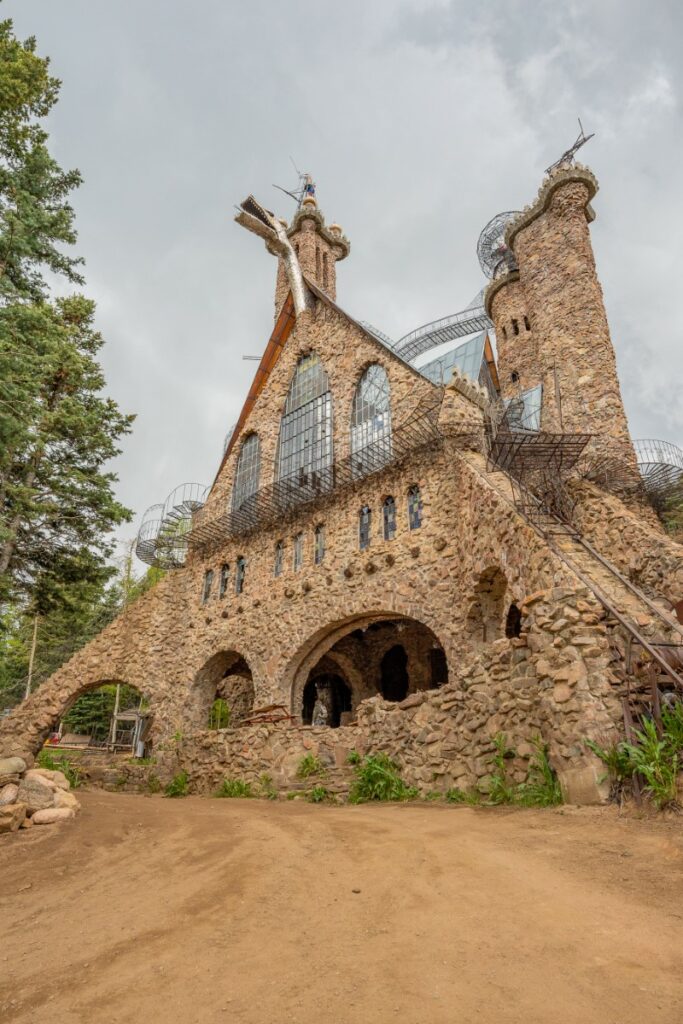
After breakfast, we road tripped 50 minutes southwest into the Wet Mountains, a subrange of the Sangre de Cristo Mountains, which receive high yearly precipitation turning the pines, aspens, and valleys into a medley of deep emerald, lime, and mint tones.
We stopped at Bishop Castle, a famous site that anyone can visit for free. The owner and builder, Jim Bishop, first constructed a water tower for his family cottage on the property in 1971: a 40 foot tall metal cylinder that his dad, Willard, surrounded with stonework. Locals started commenting that it looked like a turret. Eventually, Jim decided to build by hand a complete castle. He incorporated rocks hauled from the state highway ditches, granite pulled from the Rocky Mountains, repurposed railroad ties into the arches, and mixed his own mortar.
Walking through the property felt like an adult-sized maze or funhouse. Stormy weather brought powerful gusts and rain while we were there, and there were several metal balconies that waved in the wind, so we have yet to check a few climbable features at Bishop Castle off the list.
Lake Isabel
We continued 10 minutes south on CO-165 to reach Lake Isabel, a 40-acre reservoir in San Isabel National Forest. The body of water was developed purely for recreation, a rarity for reservoirs in Colorado, by the Civilian Conservation Corps in 1936. The lake remains a place for paddling, birding, camping, and hiking, and fishing.
Stocked with brown and brook trout, half of the anglers we hiked past were tugging lines. Several campgrounds and many day-use picnic tables and grills speckle Saint Charles River in the canyon to the west of the lake.
We attempted a hike to visit a natural water slide, east of the reservoir, but the river crossings were too engulfed by runoff. Instead, we finished our hike around the lake and enjoyed a picnic overlooking the water.
Be sure to pick up and carry out all of your trash and micro-trash before leaving the lake.
Three Sisters Tavern & Grill
Before heading to our next overnighter, we stopped into the rustic Three Sisters Tavern & Grill for dinner in southern Pueblo County’s Greenhorn Valley. This stop sits along the Frontier Pathway Scenic Byway.
The 9-year-old family-run restaurant is owned by one of three sisters that grew up in Pueblo, Jamie DeVencenty, and her husband Rocky, as well as Jamie’s two sisters, Paula and Darla. Jamie’s great-great niece, Jolie, was our waitress, who started helping out there when she was 12 years old and is now age 20.
As a family-run business, Jolie explained that Jamie and her daughter are passionate, accomplished competitors at horse shows, reflected by their awards that hang in the restaurant. James also has a brother, and she’s the youngest sibling.
The menu is American with an ambiance of western hospitality, inspired by Jamie and her daughter’s horsewomanship. The foods range from burgers to salads and Mexican with tasty, hardy, creative Southeastern and chili-inspired plates. The pomegranate marg, tempura avocado appetizer, and pub steak entree with poblano cream sauce hit the spot after a day outside.
The tables are full of friendly folks that know each other, and the hospitable staff knows their orders by heart, showing the same enthusiasm for travelers.
Pueblo Mountain Park and Horseshoe Lodge
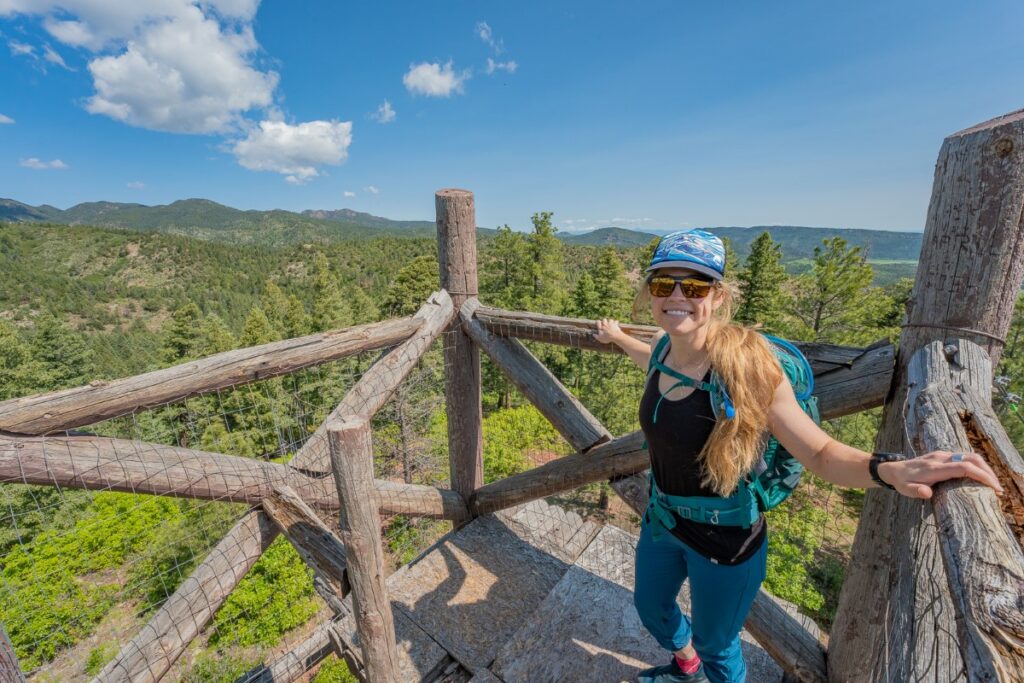
From Three Sisters, we drove 34-minutes across the farmlands to the foothills to reach Pueblo Mountain Park and Horseshoe Lodge, which was the leafiest, most verdant thumb of our entire trip: 611 acres owned by Pueblo and managed by the Nature & Wildlife Discovery Center nonprofit, juxtaposed with a 17,000-acre roadless section of the San Isabel National Forest.
Encompassed by 100-year-old Ponderosas that pierce the air alongside the singing spring cicadas, the property was built in the 1930s by the Work Project Administration crews. After being left unused for decades, the property was renovated as an eco-lodge — including composting toilets and a biomass boiler heating system — over a six year process, by 2012.
The Nature & Wildlife Discovery Center nonprofit specializes in outdoor and nature programs. In step, the grounds include an interpretive center and dormitory rooms for connecting people with nature and providing education about the flora and fauna. There’s also a group campfire ring, meditative labyrinth, outdoor amphitheater, and gazebos. We stayed at Horseshoe Lodge, in the Swedish Mountain room with a fireplace, and enjoyed a campfire in the light rain while thunder rolled through the canyon.
Of the seven miles of trails in the city park, we hiked through bright green, abundant scrub oak, aromatic ponderosas, and blossoming wildflowers to reach the highest point in the park: The Fire Tower, a double-tier lookout built for recreationists in the 1930s, from which you can see Beulah Valley, 14,115-foot Pikes Peak, and Pueblo Reservoir.
I look forward to learning more about Pueblo in the years to come and hope you enjoyed learning about our experience, too. Remember to consciously explore these beautiful outdoor spaces and Leave No Trace by picking up your trash as you go.
Thanks to Visit Pueblo for collaborating with us to spotlight LNT principles in Southeastern Colorado.

